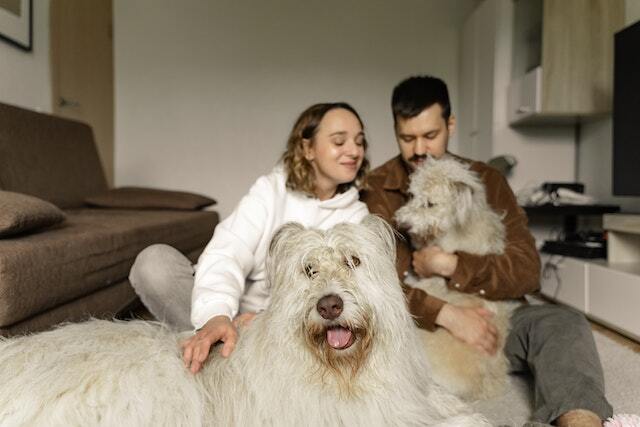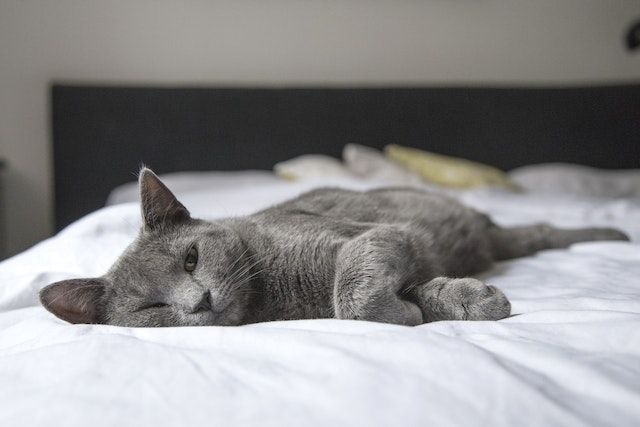
- 8 Reasons to Consider Renting to Tenants with Pets
- Larger Pool of Potential Residents
- Longer Lease Terms
- Increased Resident Loyalty
- Reduced Vacancy Rates
- Attracting Responsible Residents
- Positive Impact on Resident Well-Being
- Competitive Advantage in the Rental Market
- Potential for Lower Turnover Costs
- Conclusion
In the ever-evolving landscape of multi-family property management, one topic that continues to spark debate is whether to allow pets in rental units. While some property owners may hesitate due to concerns about potential property damage or disturbances, there are numerous compelling reasons to consider a pet-friendly policy.
This article explores 8 key benefits of renting to tenants with pets, specifically tailored for multi-family properties.
8 Reasons to Consider Renting to Tenants with Pets
Larger Pool of Potential Residents
Accepting pets in multi-family properties significantly expands the potential tenant base, as a large percentage of American households include pets. This broader appeal can lead to faster occupancy rates and reduced marketing costs, as pet owners often struggle to find pet-friendly rental properties.
By tapping into this underserved market, property owners can differentiate themselves and attract a diverse range of responsible tenants. Pet-friendly policies help properties maintain a competitive edge in areas with high pet ownership rates leading to increased demand
Longer Lease Terms
Moving can be stressful for animals, so pet owners tend to favor stability and are more inclined to sign longer leases due to the challenges of finding pet-friendly housing. This tendency towards extended tenancies can result in reduced turnover rates and more stable occupancy for multi-family properties.

Increased Resident Loyalty
Allowing pets fosters a stronger emotional connection between tenants and their living spaces, as they can create a true home environment that includes their beloved animals. This emotional investment often translates to increased loyalty towards the property and management, leading to higher tenant satisfaction and retention rates.
Pet-friendly policies demonstrate that the property management values the complete well-being of its residents, including their relationships with their pets, which can cultivate a sense of appreciation and goodwill. Pet-owning tenants are more likely to overlook minor inconveniences and maintain a positive relationship with property management.
Reduced Vacancy Rates
Pet-friendly policies can contribute to lower vacancy rates in multi-family properties by catering to the high demand for pet-accommodating housing. This consistent occupancy helps to ensure a steady cash flow and minimizes the financial impact of vacant units.
Even during slower rental periods, pet-friendly properties may maintain higher occupancy rates due to the limited supply of such accommodations in many areas. The reduced vacancy rates improve the property's financial performance and a more vibrant and active community atmosphere within the multi-family complex.
Attracting Responsible Residents
Pet owners often exhibit traits of responsibility and reliability, since caring for an animal requires commitment, financial stability, and a sense of accountability. These qualities generally translate to being a good tenant, resulting in timely rent payments, better maintenance of living spaces, and adherence to community rules.

Responsible pet owners are likely to be conscientious about their pet's behavior and impact on the property, often going above and beyond to ensure their animals don't cause disturbances or damage. This attracts a tenant base that is more likely to contribute positively to the overall community atmosphere and property upkeep.
Positive Impact on Resident Well-Being
Allowing pets in multi-family properties can significantly enhance the overall well-being of residents by providing companionship, reducing stress, and encouraging physical activity. Happy tenants can mean positive word-of-mouth recommendations for your rental property and a stronger sense of community in the building.
Pet-friendly environments often foster social interactions among residents, as pet owners tend to connect during walks or in designated pet areas. The presence of pets creates a more home-like atmosphere resulting in a more positive and harmonious living environment for all tenants.
Competitive Advantage in the Rental Market
In areas where pet-friendly housing is scarce, allowing pets can give multi-family properties a significant edge over the competition. This unique selling point can be leveraged in marketing efforts to attract potential tenants and stand out in a crowded rental market.
Pet-friendly properties may find it easier to maintain high occupancy rates and higher rent prices due to the high demand and limited supply of such accommodations. Being known as a pet-friendly community can improve your property's reputation, which strengthens its position in the local market.

Potential for Lower Turnover Costs
While there may be concerns about pet-related damage, responsible pet owners often take excellent care of their living spaces to ensure a comfortable environment for both themselves and their pets. In many cases, the cost of routine maintenance between pet-owning tenants may not differ significantly from that of non-pet-owning tenants.
The longer lease terms and increased loyalty associated with pet owners can result in fewer turnovers overall, potentially reducing the cumulative costs of unit preparations between tenancies. Income generated from pet fees or higher rents can offset any incremental cleaning or repair costs.
Conclusion
Renting to tenants with pets offers a ton of benefits that can positively impact both the financial performance of your property and the overall resident experience. From expanding the pool of potential tenants to fostering a sense of community and well-being, pet-friendly policies can be a strategic advantage in today's competitive rental market.
Castle Management understands the nuances of implementing and managing pet-friendly policies in multi-family properties. We ensure property owners confidently embrace the advantages of renting to tenants with pets. Our comprehensive approach ensures that both human and furry residents can coexist harmoniously, creating a thriving and desirable living community.
